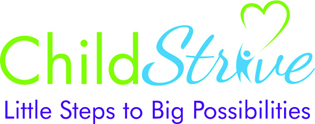“The best toys don’t beep, talk, dance or flash to hold a child’s attention, they require imagination to come alive.”
Choose toys that you child can play different games with. For example, wooden blocks or chunky plastic interlocking blocks can be used to make a road, a zoo, a bridge, or a spaceship.
Look for toys that will grow with your child. Finding toys that can be fun for your child at different developmental stages. For example, small plastic animals are fun for a young toddler who may make a shoebox house for them, while an older toddler can use them to act out a stories.
Look for toys that spark your child’s imagination. Pretend play builds language and literacy skills, problem-solving skills, and the ability to sequence. Examples: Dress-up clothing, blocks, toy food, and plastic plates, action figures, stuffed animals and dolls, trains and trucks and boxes all build pretend play.
Give your child the chance to play with “real” stuff—or toys that look like the real thing. Toys that help her figure out how objects in her world work. Examples: Plastic dishes and food, toy keys, toy phone, dress-up clothes, musical instruments, child-size brooms, mops, brushes and dustpans.
Toss in some “getting ready to read” toys. Books, magnetic alphabet letters, and art supplies like markers, crayons, and finger-paints help your child develop early writing and reading skills.
Seek out toys that encourage your child to be active. Balls of different shapes and sizes, tricycles, wagon to fill and pull, gardening tools to dig and rake with, moving boxes to crawl through.
Resources: “Zero to Three” website www.zerotothree.org and “Zero to Five”
ChildStrive has been partnering with Tulalip families for more than 30 years. For information about your child’s development contact Carol Good at ChildStrive at (425) 353-5656 x7223 or Carol.Good@ChildStrive.org. More information about ChildStrive can be found on our website at www.ChildStrive.org
